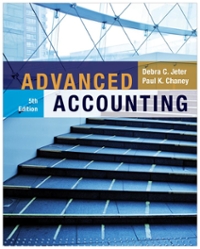Alan Norwood is currently a senior associate with the law firm of Butler, Starns, and Madden (BSM).
Question:
Alan Norwood is currently a senior associate with the law firm of Butler, Starns, and Madden (BSM). His compensation currently includes a salary of $155,000, and benefits valued at $5,000. BSM is considered among the strongest of local firms, with assets of $10 million (cash $2,000,000, and accounts receivables $8,000,000), liabilities of $7.5 million, and 11 partners.
Alan anticipates admission to the partnership on July 1 of this year. The senior managing partner, Jane Butler, has had preliminary discussions with Alan in which the senior partner proposed the following:
1. A 5% interest in BSM capital and profits in recognition of Alan’s commitment to the firm and in exchange for a capital investment by Alan of $150,000. This 5% interest would be acquired from the other partners.
2. Alan’s compensation will consist of a monthly withdrawal of $18,000 and benefits valued at $5,000 annually. Monthly withdrawals approximate firm profits, but any unpaid profits will be distributed as a bonus to Alan after the end of each partnership year.
On March 1, only one month prior to Alan’s final negotiation meeting for entry into the partnership, Mary, one of the junior associates, discreetly informed Alan that the firm was drawing up documents for Hugh Starns’ retirement. Hugh has a 5% interest in the firm’s capital and profits with a book value of $125,000. The partners have agreed upon a $75,000 cash settlement of the interest held by Mr. Starns. (Of the other 10 partners, numbers 1 through 9 hold 10% interests, and number 10 holds a 5% interest).
Required:
A. Assume Mr. Starns retires with his $75,000 settlement, and Alan is admitted to the partnership as proposed.
(1) Prepare journal entries to record the retirement and admission.
(2) Discuss the factors Alan needs to consider in evaluating whether he has improved his annual compensation from the firm. Although this is not a tax course, include a discussion of the various tax issues.
(3) Should Alan be concerned regarding the impending retirement and settlement of Mr. Starns’ capital account assuming Alan is confident that he will be able to match the revenue-generating ability of Mr. Starns?
B. Assume instead that Alan is so disturbed by the impending departure of Mr. Starns that he decides to join Mary, the junior associate, in leaving the firm to form their own law partnership. Both Alan and Mary feel confident that during their tenures at BSM they have developed such good working relationships with their clients that the majority of their clients will follow them to the new firm.
(1) Should Alan and Mary have any hesitation in quietly recruiting BSM clients to “follow them” to the new law firm?
(2) Can the partners of BSM prevent such recruiting of clients based on the claim that these clients are BSM “property”?
C. Assume instead that the firm encounters difficulties from which it is unable to recover, and in April, the decision is made to liquidate the firm. It is discovered that Mr. Starns has (in violation of the partnership agreement) taken draws which reduced firm cash and his capital account by $130,000. However, BSM owes Mr. Starns $10,000 for a separate loan made to the firm some 10 years ago. As of May 1, the firm had unallocated profits of $25,000, and cash had also increased by $25,000.
(1) Assuming that the provisions of UPA Section 40(b) are adhered to strictly, prepare entries to record the distributions. Assume that Mr. Starns is insolvent.
(2) If the other 10 partners are aware that Starns’ capital account will take on a debit balance, can they rightfully hold repayment of the balance due to Starns for the $10,000 loan contingent on his reimbursement of his capital account’s debit balance? Does this violate UPA Section 40(b)? On what basis can the partners justify their action (if challenged)?
A legal form of business operation between two or more individuals who share management and profits. A Written agreement between two or more individuals who join as partners to form and carry on a for-profit business. Among other things, it states...
Step by Step Answer:






